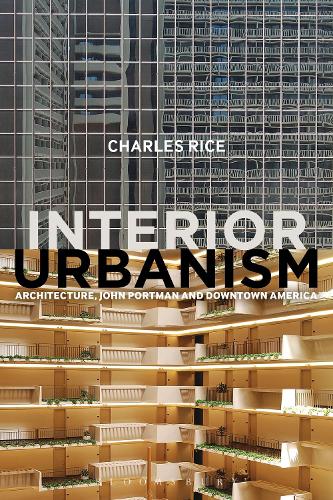
Interior Urbanism: Architecture, John Portman and Downtown America
(Hardback)
Available Formats
Publishing Details
Interior Urbanism: Architecture, John Portman and Downtown America
By (Author) Professor Charles Rice
Bloomsbury Publishing PLC
Bloomsbury Academic
25th February 2016
United Kingdom
Classifications
Professional and Scholarly
Non Fiction
Individual architects and architectural firms
History of architecture
720.48
Physical Properties
Hardback
176
Width 156mm, Height 234mm
426g
Description
Vast interior spaces have become ubiquitous in the contemporary city. The soaring atriums and concourses of mega-hotels, shopping malls and transport interchanges define an increasingly normal experience of being inside in a city. Yet such spaces are also subject to intense criticism and claims that they can destroy the quality of a citys authentic life on the outside. Interior Urbanism explores the roots of this contemporary tension between inside and outside, identifying and analysing the concept of interior urbanism and tracing its history back to the works of John Portman and Associates in 1960s and 70s America. Portman increasingly recognised as an influential yet understudied figure was responsible for projects such as Peachtree Center in Atlanta and the Los Angeles Bonaventure Hotel, developments that employed vast internal atriums to define a world of possibilities not just for hotels and commercial spaces, but for the future of the American downtown amid the upheavals of the 1960s and 70s. The book analyses Portmans architecture in order to reconsider major contexts of debate in architecture and urbanism in this period, including the massive expansion of a commercial imperative in architecture, shifts in the governance and development of cities amid social and economic instability, the rise of postmodernism and critical urban studies, and the defence of the street and public space amid the continual upheavals of urban development. In this way the book reconsiders the American city at a crucial time in its development, identifying lessons for how we consider the forces at work, and the spaces produced, in cities in the present.
Reviews
Charles Rice's study of the architecture of John Portman raises key questions about the quality of public space in modern cities where multi-use complexes with gleaming towers and soaring atriums remake the relationship between street, square and interior. Rice thus offers a timely analysis for developers and planners in today's international marketplace. * Alice Friedman, Professor of Art, Wellesley College, USA *
Despite its wide-ranging influence, the work of the developer-architect John Portman has to date recieved little attention from scholars of architecture. Rice's study of Portman's paradigmatic "interior urbanism" addresses this lacuna, skilfully contextualising its emergence within the ideologies, institutions, politics and technologies of urban development in the USA in the 1960s and 70s. This is an important study for anyone seeking to understand the prehistory of our global urban present. * Mark Dorrian, Forbes Chair in Architecture, University of Edinburgh, UK *
Author Bio
Charles Rice is Professor of Architecture at the University of Technology Sydney, Australia.
